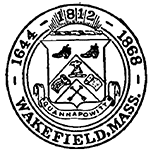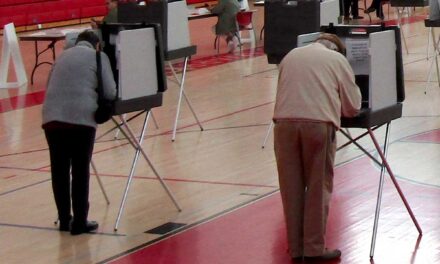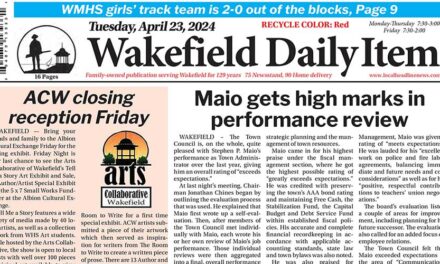Published in the June 17, 2015 edition
WAKEFIELD — The Advisory Board of Public Works decided this week to recommend an almost 4 percent increase in water and sewer rates for the year beginning July 1.
The decision to raise the rates is now in the hands of the selectmen, who will discuss the matter Monday night.
The proposed rate increases would bring the so-called average ratepayer’s quarterly water and sewer bill to $450.90, or $1,803.60 annually, if the allowed discount is taken.
According to information supplied by DPW administrators, the 3.727 percent hike in the combined water and sewer rates is necessary to fund the operating budgets of the town’s water and sewer operations for fiscal year 2016, which starts July 1; to create enough reserves to provide for consumption shortfalls, emergencies and future capital improvements and to pay the ever-rising assessments charged by the Mass. Water Resources Authority (MWRA) for both water and sewer, among other things.
The current water rate is $5.65 per 100 cubic feet used. Under the public works proposal, it would jump to $6.15 per 100 cubic feet. The current sewer rate is $10.45 per 100 cubic feet. The proposed rate for the next fiscal year is $10.55 per 100 cubic feet.
The proposed water rate of $6.15 “provides for an average annual water bill (after the discount is taken) of $664.20 or $166 per quarter,” according to a memo to the selectmen from Advisory Board of Public Works Chairman James Lapery. “In regards to the sewer rate, the (proposed rate) of $10.55 provides for an average annual sewer bill (after the discount is taken) of $1,139.40 or $284.85 per quarter. The combined average annual water and sewer bill (would be) $1,803.60 or $450.90 per quarter (if the discount is taken). This represents a total increase of $64.80 per year (after the discount is taken) for an average water and sewer bill or an increase of $16.20 per quarter (after the discount is taken),” Lapery concludes.
The average water and sewer bill referred to in the DPW administration information is based on an average single-family house using 12,000 cubic feet of water — 89,760 gallons — per year.
Additionally, the Lapery memo points out that nearly 90 percent of ratepayers take advantage of the 10 percent discount given for paying the bills on time.
The sewer flat rate charged mainly to those residents with wells would be $316.50 a quarter or $284.85 after the discount is taken.
It is common for any public works department to try to explain water and sewer rate increases in the most positive light. In Wakefield, Lapery points out that the average water and sewer bill — after the discount is taken — is less than those in Reading, Melrose and Stoneham.
Also, “the cost per gallon of water (including the sewer charge) is two cents per gallon,” Lapery tells the selectmen. “Compare this to a 16 ounce bottle of water bought at the store which costs between $1.25 and $1.50 per bottle. ..,” Lapery continued.
At a new water rate of $6.15 per 100 cubic feet, the DPW would collect an estimated $4,346,901 in revenue; at the proposed sewer rate of $10.45 per 100 cubic feet, it would bring in about $7,259,384. This would provide about enough money to fund the Water and Sewer Division budgets for the coming fiscal year.





